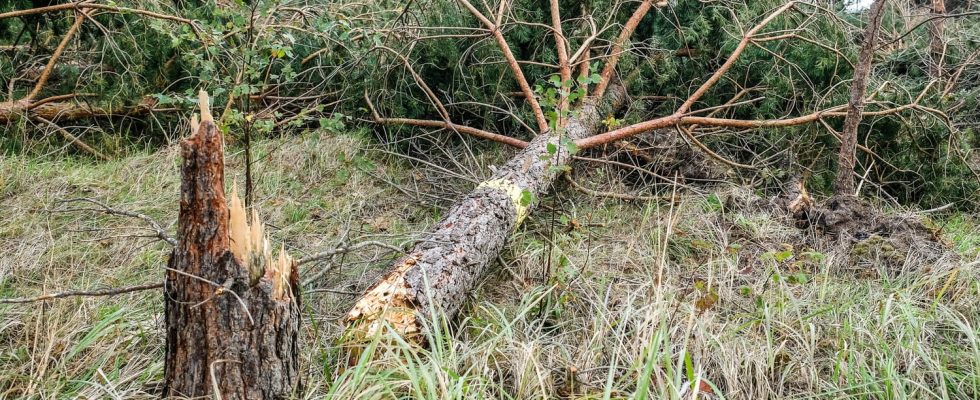With Storm Ciaran arriving, many more trees could fall or even be uprooted this week in France than in previous storms. Here’s why.
Gusts of up to 140 km/h on the coasts and 110 km/h inland. Only a few days after the Céline depression which swept the Atlantic coast of the country, the north-west of France is preparing to be whipped again by the violent winds of storm Ciaran.
The “quite exceptional” low pressure system is considered a “dangerous phenomenon” by Meteo France which is already refining its forecasts. And for good reason: while violent winds blowing at more than 100 km/h are already dangerous as such, they can cause significant damage. Near the coasts, they agitate the swell, favoring the formation of waves and therefore the risk of submersion, while inland, they threaten to bring down trees.
The risk of seeing trees blown away by the gusts of Storm Ciaran, expected between Wednesday and Thursday, is increased tenfold, because with a summer-like start to autumn, the trees are still leafy at the start of November. A phenomenon far from trivial, which worries experts. Branches loaded with leaves offer better wind protection than a tree that is already bare for the winter. And by blowing at an average of 110-120 km/h, according to initial forecasts, the gusts could cause many trees to fall. “The slightest gust of wind, with the reach that[il] will have on the leaves, could topple a whole bunch of trees”, confirmed the meteorologist Pierre Huat, at the microphone of France 2.
Even tree roots may not be enough to keep some hardwoods from falling. The fault is the heavy and numerous precipitations of the last few days: by flooding the soil with water, the rains have made the earth looser and therefore less capable of retaining the roots of the trees underground in the event of violent winds. Hundreds or even thousands of trees are expected to be destroyed this week.
Not all trees will fall, but there may be significantly more tree falls than in previous severe weather. For each tree that falls, particularly in urbanized areas, there is a risk of seeing infrastructure crushed under the weight of the giant and its branches. A risk that is all the greater if these buildings, whether houses, public establishments or simply bus shelters, house people. The risk also exists in less urban areas, such as on roads bordered by forests where a tree uprooted in a violent blow can fall onto the road and cause accidents.
In 2023 alone, previous storms have shown that the risk of being injured by a falling tree, while not the greatest, is very real and can have serious consequences. In August 2023, a 10-year-old child found himself between life and death after being struck by a tree that fell in the wind of Storm Patricia in Charente-Maritime. In March 2023, two men died in the Vosges and Alsace after falling trees caused by storm Mathis. And again last weekend, several trees were uprooted by the winds of storm Céline, fortunately there were no casualties.
